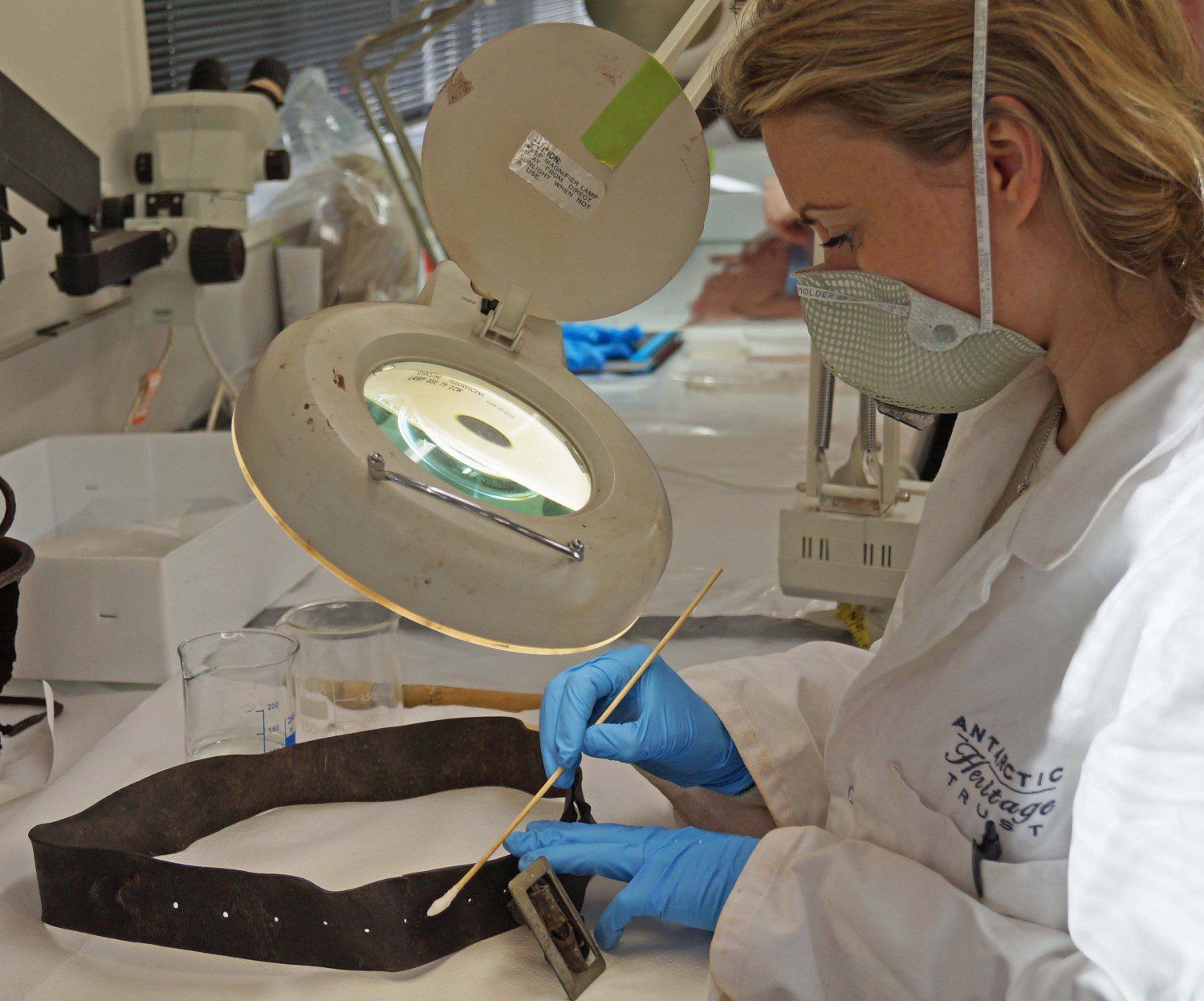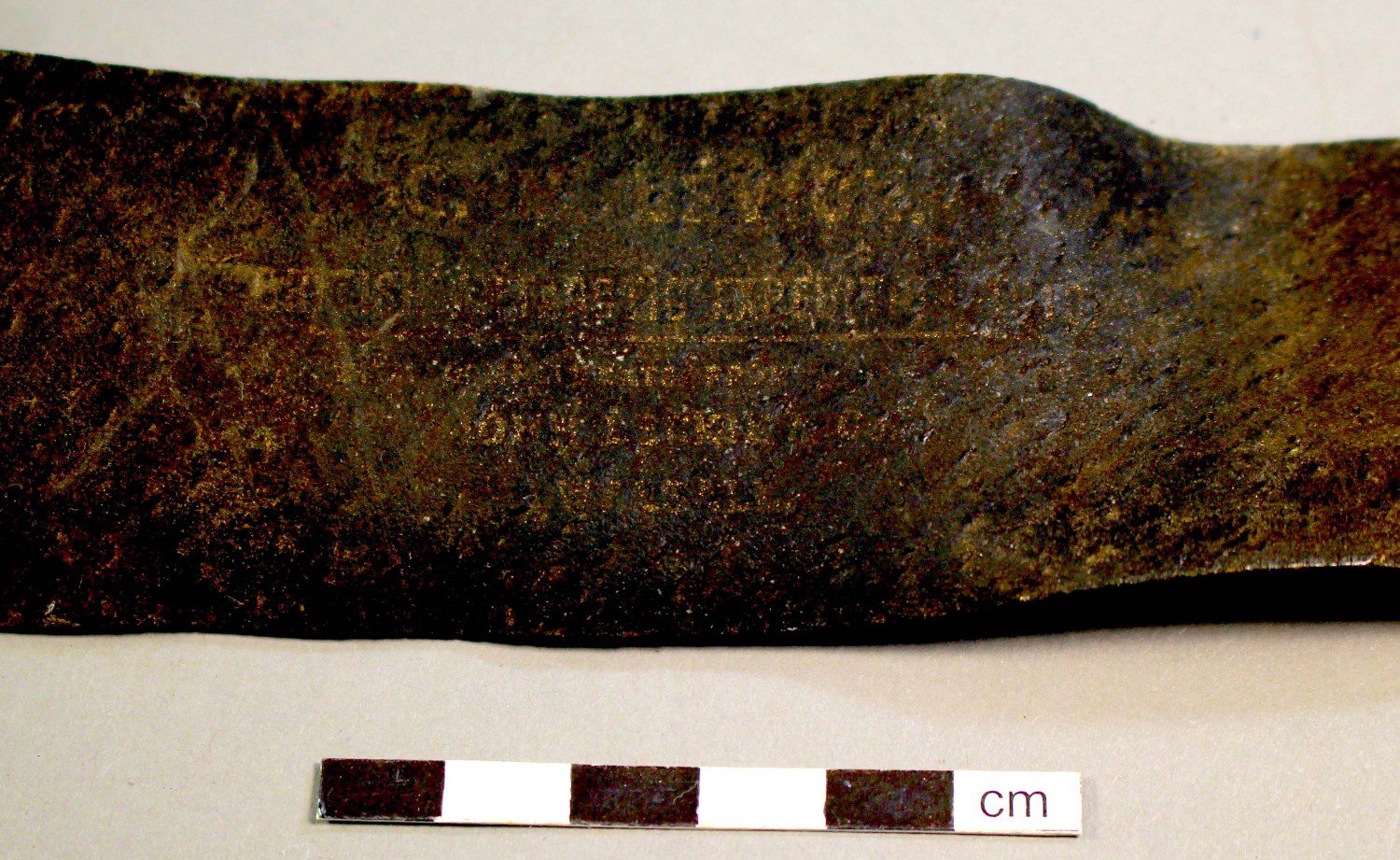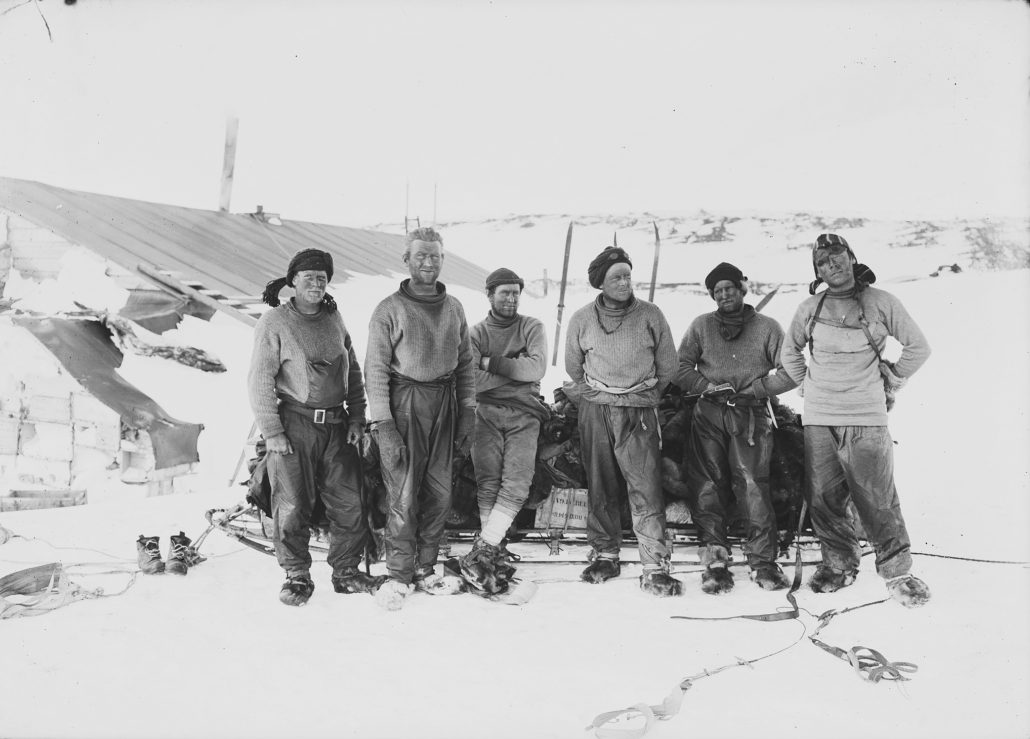A Discovery Below Penguin Guano
By Stefanie White
Looking through the magnification lens, I take a breath through my respirator and reach for the micro spatula. The belt is encrusted with layers of dried penguin guano and dirt. It stinks. With the spatula, I lift thin sheets of the encrustations to reveal a stained leather surface. Tweezers hold penguin feathers fast and I remove them from within the encrustation with some force. And then finally I role cotton swabs dampened in deionised water across the leather surface and begin to reveal the original surface. The process is slow, deliberate, meditative and satisfying in that oddly pleasurable way.
 Antarctic Heritage Trust
Antarctic Heritage Trust As time passes, I notice the wear marks in the belt and notice which punch hole was used most often. I think about the size of the owner’s waist. I see handmade punch holes and contemplate the dramatic weight loss the owner must have experienced while based at Cape Adare. I think about why the owner left his belt behind … perhaps he forgot it, perhaps he suffered from T3. The buckle is interesting. It’s square, elegant and made out of nickel.
 Antarctic Heritage Trust
Antarctic Heritage Trust As I swab, I tune into the New Zealand radio playing in the background and into conversations happening in the lab. I continue to swab and swab and swab the leather belt. And then from beneath the residue of the penguin guano, I see something. I see a gold printed letter. I turn and shout to my colleagues ‘The owners name is on the belt’ and together we decipher the printed letters.
George Murray Levick was a naval surgeon and zoologist on Scott’s Terra Nova Expedition of 1910-13. Being a part of the Northern Party, he spent the summer of 1911-1912 at Cape Adare. Levick and possibly all members of the Terra Nova expedition were gifted a leather belt by the leather manufacturing company Leckie and Co. based in Walsall, England. They received this gift especially for this British Antarctic Expedition. The discovery of the gold printed letters was a highlight this week in the lab. The discovery is one-of-a-kind as no other belt survives. Information previously unknown was uncovered and it’s always exciting for a conservator to be able to attribute an owner’s name to an artefact.
 Canterbury Museum
Canterbury Museum Northern party on arrival at Cape Evans, 7 November 1912. Photographer: Frank Debenham. British Antarctic Expedition, 1910-13


